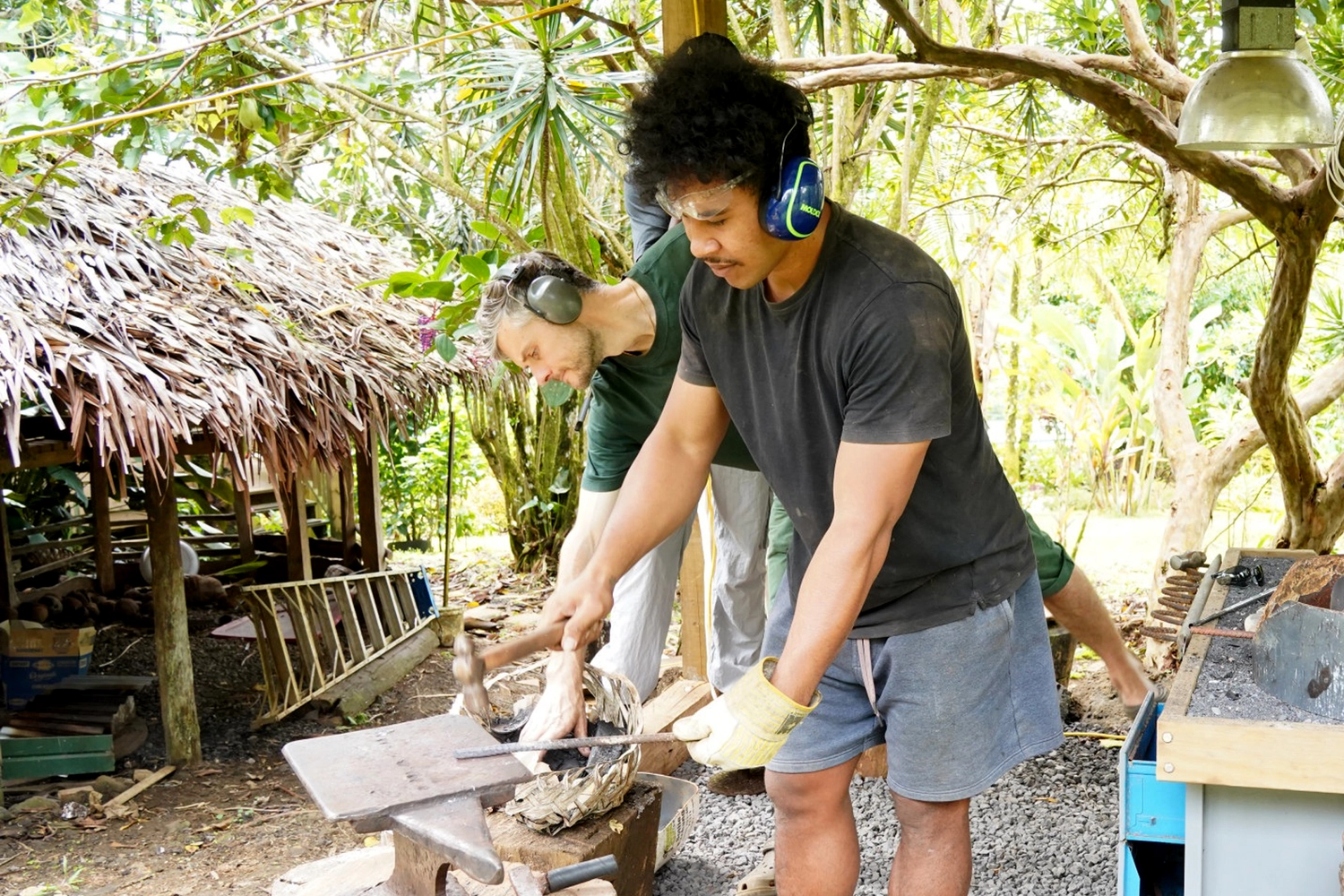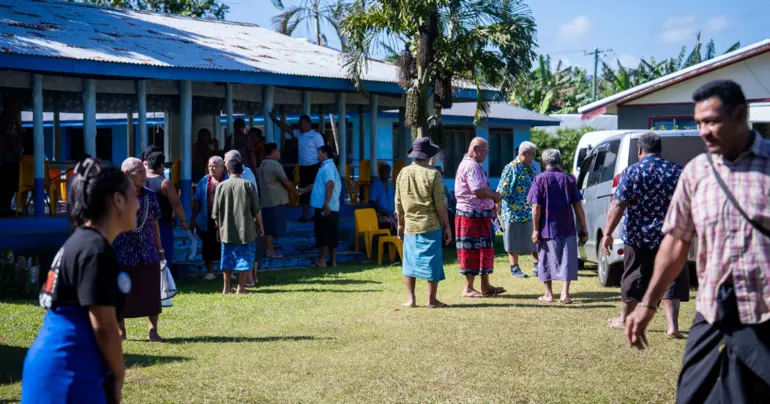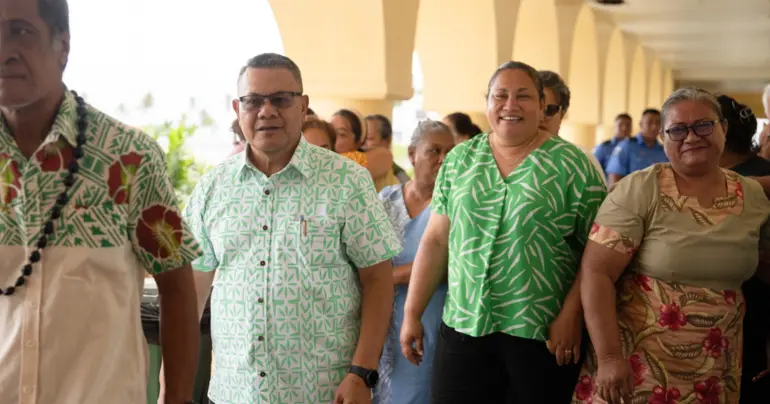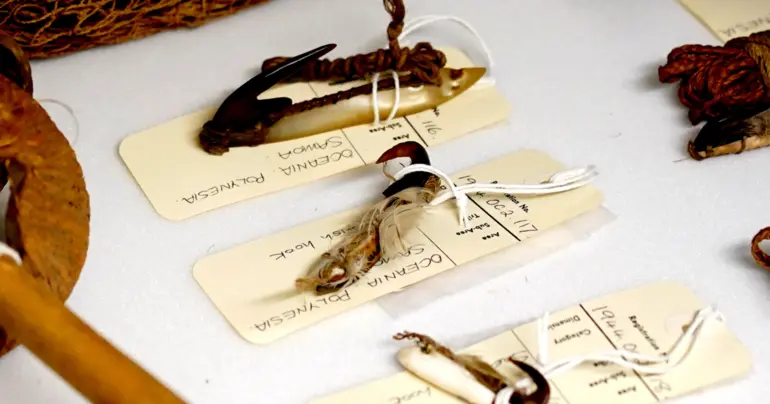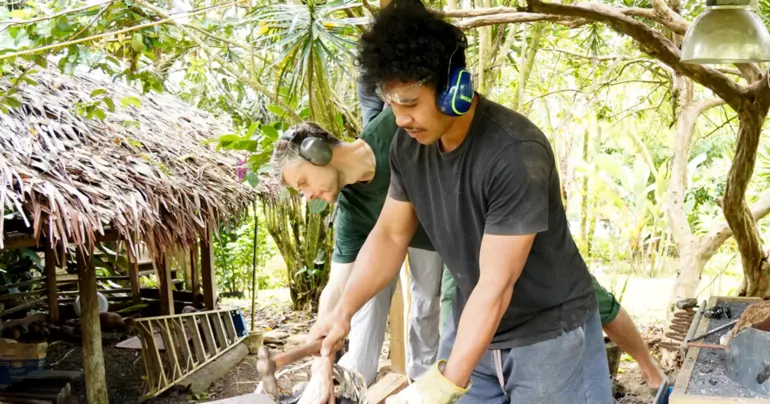Reviving the art of blacksmithing
Blacksmithing has been added to the growing list of craft activities at the Tiapapata Art Centre, driven by both practical and cultural purposes: to produce traditional wood‑carving chisels and the to‘ū — the curved adze prized by Samoan canoe builders.
Blacksmithing is one of the world’s oldest crafts, believed to have originated with the Hittites of Anatolia around 1500 BCE. Around the same broad era, the first settlers arrived in Samoa, with archaeological evidence of Lapita pottery shards dating habitation to approximately 1000 BCE, three thousand years ago.
In Samoa, blacksmithing was introduced and expanded by European settlers, particularly the Germans, in the late 19th century. One pioneering figure was Carl Otto Adam, a German‑born blacksmith and engineer, who established a smithy at Matafele, Apia, around 1890. His workshop provided ironwork, machine repairs and other metal services that supported the island’s early modernisation. Since that time, Samoan artisans have continued to forge tools using salvaged metal — including shipwrecks, machinery and other imported steel goods — continuing a tradition of resourcefulness and transforming the old into the new.
With the introduction of blacksmithing, the Tiapapata Art Centre is reviving a heritage craft while ensuring that local tool‑making for wood‑carving and canoe‑building continues with locally forged, high‑quality implements. Using car springs salvaged from Pacific Recycles Scrap Metal at Tafaigata, this initiative underscores the Centre’s commitment to preserving traditional knowledge while promoting sustainability, innovation and self‑reliance among Samoan artisans.
“For this initiative, we are deeply indebted to Domas Rukas, who visited us earlier in the year with his family,” said Galumalemana Steven Percival of the Tiapapata Art Centre. “I have envisioned establishing a forge here for over twenty years—ever since I first became interested in stone adzes, the immediate predecessors of the steel adze.
Mr Rukas, a facilitator and educator at the Willunga Waldorf School in South Australia, places great importance on relationships and community collaboration. He is strongly committed to creating safe, inclusive spaces for experiential learning and participation, where collective wisdom and creativity can flourish.
This blacksmithing initiative also forms a key link with the current heritage‑revival sessions run under the title Upu ma Tala Heritage Talanoa Sessions—implemented with the support of UNESCO and designed to safeguard Samoa’s intangible cultural heritage through hands‑on activities. In line with its mandate under the 2003 Convention for the Safeguarding of the Intangible Cultural Heritage, UNESCO continues to work closely with communities to ensure that traditional knowledge is transmitted to younger generations and remains a living part of cultural identity.
Most recently, the Centre completed its second canoe as part of the climate‑action exhibition held at the Samoa National Arts and Culture Centre, culminating with the lashing of the outrigger float on a “va‘a Niue” during UN Day on 24 October 2025.
As noted by Sara Garcia de Ugarte, UNESCO Culture Programme Specialist for the Pacific, “Safeguarding intangible heritage means keeping living traditions alive. When people share their knowledge through practical workshops such as canoe-building or siapo-making, they are not only preserving skills but strengthening community resilience and pride in their cultural diversity.” The final two sessions of the Upu ma Tala series will take place in November, focusing first on the traditional art of siapo on 8 November, followed by the canoe-building session the following week, timed for the second palolo rise. As part of this free and open series, participants will be invited to join the building of an outrigger canoe and take part in a palolo-catching expedition, celebrating the deep connection between Samoan life and the ocean.
The exhibit, organised together with UNESCO, which also included crafts such as the fagufagu (bamboo flutes), vilipā (pump‑drills), and pā‑alo‑atu (composite lures used to catch bonito or skipjack tuna), attracted significant attention from the public, media and craft enthusiasts alike. This week, artisans at Tiapapata will embark on building a third, more ambitious canoe: a vaʻaalo, the slatted and lashed fishing canoe.
This fusion of metal‑tool forging, wood‑carving, and boat‑building across crafts exemplifies the mission of UNESCO and the Art Centre to revitalise cultural practices, strengthen artisan capacity, and build sustainable pathways for Samoa’s rich cultural heritage in the modern era.




